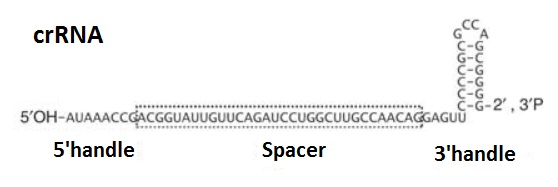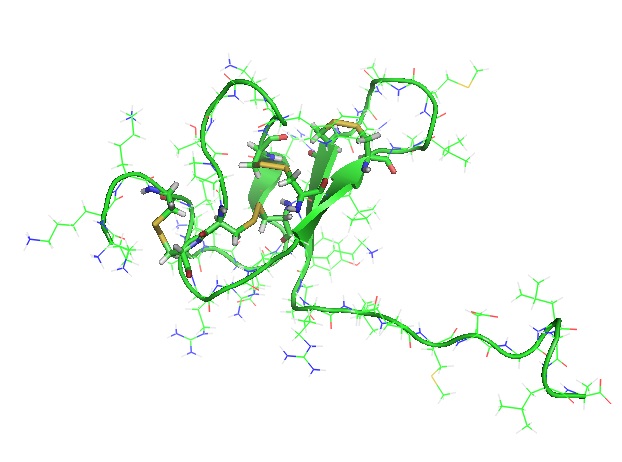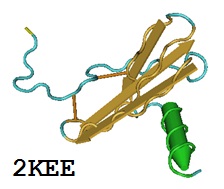|
|
|
Bio-Synthesis Newsletter - November 2016
|
Synthetic CRISPR RNA is useful for Gene Editing
 Synthetic RNA is well suited for CRISPR-Cas based gene editing experiments. Genome editing with the CRISPR-Cas9 system is a very powerful technology for manipulating genomes. Gene editing using CRISPR-Cas system has rapidly become an important screening tool for drug discovery. However, the delivery of the Cas9 protein and guide RNA(s) to selected cells or targets is a technical challenge. To circumvent this, chemically modified, 29-nucleotide synthetic CRISPR RNA (scrRNA) have been used to replace the natural crRNA. Modified synthetic scrRNA are useful for genome editing exhibiting increased metabolic stability and binding affinity scrRNA to tracrRNA as needed for the development of CRISPR-Cas based therapeutic applications. Synthetic RNA is well suited for CRISPR-Cas based gene editing experiments. Genome editing with the CRISPR-Cas9 system is a very powerful technology for manipulating genomes. Gene editing using CRISPR-Cas system has rapidly become an important screening tool for drug discovery. However, the delivery of the Cas9 protein and guide RNA(s) to selected cells or targets is a technical challenge. To circumvent this, chemically modified, 29-nucleotide synthetic CRISPR RNA (scrRNA) have been used to replace the natural crRNA. Modified synthetic scrRNA are useful for genome editing exhibiting increased metabolic stability and binding affinity scrRNA to tracrRNA as needed for the development of CRISPR-Cas based therapeutic applications.
|
|
Read More
|
|
|
What are Knottins?
 Knottins are small constrained polypeptides that have a common disulfide-bonded structural motif and a triple-stranded ß-sheet fold that make up their 3D structure. The KNOTTIN database contains as list of knottin peptides. Agatoxin is a knottin peptide isolated from the venom of spiders. Agatoxin belong to a class of diverse peptides that block glutamate-gated ion channels, voltage-gated sodium channels, or voltage-dependent calcium channels. Engineered, synthetic agatoxin peptides can be used as a molecular probe for in vivo tumor imaging. For example, an engineered fluorescent knottin peptide has been shown to enable noninvasive optical imaging of intracranial medulloblastoma, a central nervous sytem tumor. Knottins are small constrained polypeptides that have a common disulfide-bonded structural motif and a triple-stranded ß-sheet fold that make up their 3D structure. The KNOTTIN database contains as list of knottin peptides. Agatoxin is a knottin peptide isolated from the venom of spiders. Agatoxin belong to a class of diverse peptides that block glutamate-gated ion channels, voltage-gated sodium channels, or voltage-dependent calcium channels. Engineered, synthetic agatoxin peptides can be used as a molecular probe for in vivo tumor imaging. For example, an engineered fluorescent knottin peptide has been shown to enable noninvasive optical imaging of intracranial medulloblastoma, a central nervous sytem tumor.
|
|
Read More
|
|
|
Can a peptide-hormone conjugate treat a disease?
 A glucagon-T3 peptide conjugate lowers lipid levels and improves glucose tolerance in metabolic disease. The bioactive glucagon-T3 peptide is a peptide-hormone conjugate. Glucagon-T3 is a tailored peptide-conjugate drug that aims to treat symptoms of and reverses the underlying cause of metabolic disease. The concept behind the design of peptide-hormone conjugates is to create drugs that engage more than one molecular target and pathway to treat complex diseases. A glucagon-T3 peptide conjugate lowers lipid levels and improves glucose tolerance in metabolic disease. The bioactive glucagon-T3 peptide is a peptide-hormone conjugate. Glucagon-T3 is a tailored peptide-conjugate drug that aims to treat symptoms of and reverses the underlying cause of metabolic disease. The concept behind the design of peptide-hormone conjugates is to create drugs that engage more than one molecular target and pathway to treat complex diseases.
|
|
Read More
|
|
|
A chemokine that protects myocardial cells
 The chemokine stromal cell-derived factor-1 (SDF-1/CXCL12) is involved in leukocyte migration, stem cell homing, and cancer metastasis. SDF-1/CXCL12 contains two cysteine bonds stabilizing its structure. The chemokine activates CXCR4, a coreceptor for T-tropic HIV-1. CXCR4 is a receptor that increases intracellular calcium, enhances MAPK1/MAPK3 activation and is involved in hematopoiesis and cardiac ventricular septum formation. Recently, SDF-1 has been shown to play a protective role after myocardial infarction. The small protein is now a candidate for development of new anti-ischemic compounds. Chemokines are a family of ~50 small, secreted proteins. During normal immune function as well as in disease states chemokines functions as a chemoattractant. The chemokine stromal cell-derived factor-1 (SDF-1/CXCL12) is involved in leukocyte migration, stem cell homing, and cancer metastasis. SDF-1/CXCL12 contains two cysteine bonds stabilizing its structure. The chemokine activates CXCR4, a coreceptor for T-tropic HIV-1. CXCR4 is a receptor that increases intracellular calcium, enhances MAPK1/MAPK3 activation and is involved in hematopoiesis and cardiac ventricular septum formation. Recently, SDF-1 has been shown to play a protective role after myocardial infarction. The small protein is now a candidate for development of new anti-ischemic compounds. Chemokines are a family of ~50 small, secreted proteins. During normal immune function as well as in disease states chemokines functions as a chemoattractant.
|
|
Read More
|
|
Please note that creation and use of synthetic oligos for CRISPR applications requires a license from ERS genomics, the holders of IP for CRISPR technology. We do not have a license to provide synthetic oligos used in CRISPR technology from ERSGenomics. Contact ERSGenomics.com for further information.
|
|
|
|
Bio-Synthesis, Inc.
800 Mario Court, Lewisville, TX 75057, USA
Toll Free: 800.227.0627 | 1.972.420.8505 (Intl.)
|
|
|
|
|
|